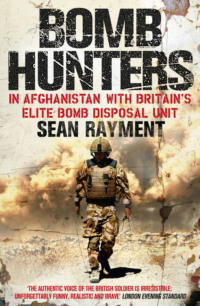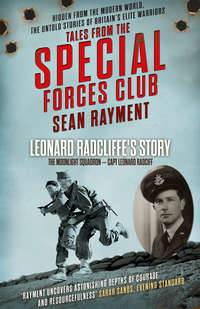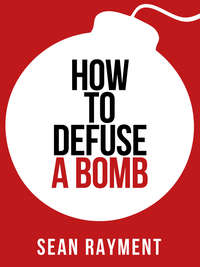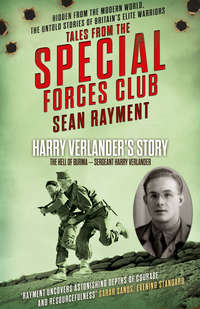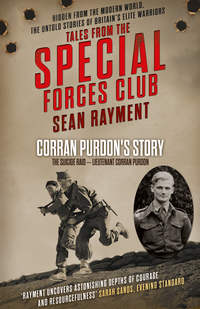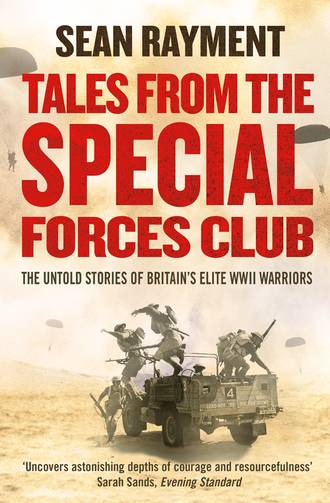
Полная версия
Tales from the Special Forces Club
† British double agent who spied for the KGB.
‡ Member of the SOE who started the war as a conscientious objector.
CHAPTER 2
The Two Wars of Jimmy Patch
The Long Range Desert Group
‘Danger has some kind of satanic appeal to me. I am drawn towards it in an octopus-like grip of fear.’
Major-General David Lloyd Owen, the commander of the Long Range Desert Group
In addition to the SOE, the Second World War saw the emergence of private armies, those units which became the special forces. This was partly because the rules of warfare had changed, and the vast distances over which the conflict was being played demanded something new. In the North African campaign, for example, the theatre of operations was the size of Europe, with most of the fighting taking place along or in close proximity to the Mediterranean coast. This meant that small, self-contained military units could disappear into the vastness of the desert and monitor the activities of the enemy unseen and unheard.
Every commander wanted to know what his enemy opposite number was doing or planning, and any unit which could help achieve this was worth its weight in gold. The Long Range Desert Group was created during that campaign in July 1940, about the same time that the SOE became operational, specifically to conduct long-range reconnaissance and raids deep behind enemy lines. It was founded by Major Ralph Bagnold and originally called Long Range Patrol.
When I began carrying out research for this book and inquired amongst veterans of the Second World War who, if anyone, might be able to help me paint a picture of what life was like operating deep behind enemy lines in one of the most hostile environments on earth, one name kept surfacing.
‘Speak to Jimmy Patch,’ I was told by members of the Special Forces Club. ‘He was there, he did the business. Fought in the desert,’ said one veteran who got to know Jimmy after the war, ‘and was captured by the Germans but escaped.’ ‘He’ll have a good tale to tell, if you can get him to talk,’ said another. Clearly Jimmy Patch was something of a legend within the Long Range Desert Group.
So on a cold January morning in 2011 it was with a keen sense of anticipation that I visited Jimmy, now 92, at his wonderfully serene hillside home in rural Kent.
‘I’m not sure there’s very much I can tell you,’ said Jimmy diffidently. ‘But why don’t we have a cup of tea and then we can chat.’
Fortified by a cup of tea and some of my wife’s home-made cake, Jimmy began to talk.
* * *
Jimmy’s life in the special forces began while he was stationed in a large, tented camp on the outskirts of Cairo in the summer of 1941. One day as he walked through the pristine, whitewashed headquarters of the Royal Artillery Depot at Al Maza with his friend Bill Morrison, he saw a note pinned to a noticeboard bearing the following typed message: ‘Volunteers required for special duties with the Long Range Desert Group. Details from the orderly room clerk.’
The two wiry young Royal Artillery gunners, who had long been in search of wartime adventure, looked at each other and smiled.
Almost from the moment of their call-up, a year earlier in May 1940 in the wake of the British Expeditionary Force’s calamity in France, Jimmy, who was born in east London, and Bill, a proud Cornishman of Scottish descent, had been seeking an escape from the drudgery which typified the life of the private soldier during the early war years.
On that early summer’s day within the vast training camp on the outskirts of Cairo, both men thought their prayers had been answered as they joined a growing queue of volunteers who were being assessed for their suitability for ‘special operations’ by Lieutenant Paul Eitzen, a young, diminutive South African who spoke with the clipped, confident tones of a public school boy. Eitzen, a member of the Royal Artillery attached to the Long Range Desert Group, wanted suitable volunteers to boost numbers of a covert unit which had begun experimenting with a 25lb artillery field gun while on operations behind enemy lines.
‘Eitzen was very pleasant to both of us,’ recalled Jimmy, 70 years later. ‘He asked us a few questions, made a quick assessment of our intelligence and our suitability to operate in small groups. He must have been satisfied with Bill and myself because we learnt within a day or so that we were in, or at least attached to, the LRDG. It was probably the easiest interview of my life. I think he sensed our suitability very quickly. We were two young, impressionable men, happy to try anything and full of initiative, and that is what Eitzen was after.’
A few days later Jimmy, Bill and Lieutenant Eitzen left Al Maza in a 15cwt Ford truck, one of several in an LRDG replenishment convoy, and began the long, arduous journey across the scorching desert to the group’s main base at the Siwa Oasis, which was about 350 miles south-west of Cairo and just 30 miles from the Libyan border.
Despite the demands and dangers of undertaking such a mission, Jimmy and Bill were gripped by a sense of excitement which they had not previously experienced as soldiers in an army at war. As the convoy entered the Sahara, Jimmy was immediately struck by the colossal expanse of the North African desert.
‘I was 21 and had never left Britain. Now I was in the desert and the natural beauty was staggering. It was something you couldn’t possibly hope to imagine. I had read about the Sahara in books but to see it with one’s eyes was breathtaking.’
Back in 1941 the wider Army knew little about the LRDG, or any of the so-called ‘private armies’ emerging during the North African campaign. But gradually stories revealing their exploits began to seep out, often in the bars of Cairo, and for men with a sense of adventure the LRDG held a certain allure.
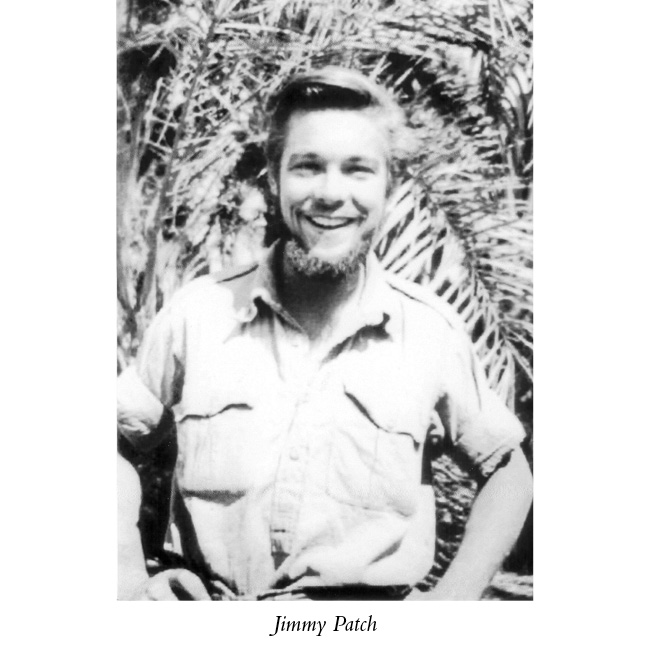
* * *
Jimmy Patch was born in 1920 and attended the Aldersbrook Elementary School in Wanstead before winning a scholarship to the Wanstead County High School where he was educated until the age of 16. Although he possessed the intellectual ability to attend university, his father, who had served in the First World War and won the Military Cross, had other ideas. After being demobbed in 1919, Jimmy’s father was employed in the Ministry of Labour during the depression and, after seeing hundreds of men join the dole following the collapse of the economy, decided that his son would get a ‘nice steady job’.
‘I left school and joined the Post Office as a counter clerk. I worked there for three years, based in Loughton, Essex; then I passed a clerical exam and was transferred to London. It was a very comfortable existence; the hours were nine to four, and nine to twelve-thirty on Saturday.’
When war was declared in September 1939, Jimmy, like hundreds of thousands of young men of his generation, soon began to accept the inevitability of being called up to train, fight and possibly die in a war of national survival.
‘I was 19 at the outbreak of war. I didn’t volunteer to serve in the Army, I waited until I was called up, which happened in May 1940, at the time of Dunkirk. I was told that I would be going to the Royal Artillery and would be a signaller – there was no option. Basic training took place in Scarborough at the Royal Artillery Signals Training Regiment. Obviously the threat of invasion at the time was very real. With practically no training at all – we certainly hadn’t fired a rifle – we were marched up to Scarborough Castle dyke every evening and spent the night guarding England. We each had a rifle and 50 rounds of ammunition in a cardboard box. We were the only thing that stood between Britain and being invaded by Hitler.’
For Jimmy, life in the Army was everything he had feared. He found the discipline and the endless inspections tiresome beyond belief, although he did enjoy the signals training, which taught him how to use a Number 11 radio* and how to send messages by radio or light-flashes using Morse code.
‘I didn’t regard being called up as an adventure, I just looked upon it as something that was inevitably happening to me. I had to submit to the discipline of the Army, of course, which I found very tiresome. In fact at one stage in 1941 I volunteered to be transferred to the RAF, because volunteers were called for, but nothing happened.’
The training continued until the late spring of 1941, when both Jimmy and Bill learnt that they were to be sent to fight in the North African campaign. Both men were given embarkation leave, but Jimmy’s leave was extended by another week after his parents’ house was damaged during a German bombing raid. ‘It was pretty scary. The house was badly damaged, but no one was injured and I got an extra week’s leave before being sent up to Liverpool to board a troopship bound for the Middle East.’
The Mediterranean Sea was a war zone in 1941, and the only relatively safe way for ships to reach Cairo was to travel in convoys via the Cape of Good Hope and up the east coast of Africa. For Jimmy and hundreds of others aboard, it was a journey into the unknown from which many would never return.
‘We were packed cheek by jowl on the troopship. There were dozens of us in a huge dormitory, each with a hammock. It was impossible to sleep. The atmosphere was hot, fetid and noisy. Every night a group of us would collect our blankets and try and find a sheltered spot on the deck and sleep there, and we did it in all weathers.
‘We all soon settled into a routine. There was a bit of training and PT to do, but we also played a lot of housey-housey – now called bingo. The voyage seemed to take an age but it ended up being quite enjoyable. We steamed almost to the other side of the Atlantic before heading back to the West African coast and pulling into Sierra Leone to refuel. Then we travelled down to Durban, where we transferred to another ship, the New Mauritania. In a convoy of three ships we moved up the east coast of Africa, into the Red Sea and on into the Suez Canal and Port Tufic.’
The LRDG was the creation of Major Ralph Bagnold of the Royal Signals, a man regarded by many within the new world of special forces as a genius. In the late 1920s and 30s, Bagnold, together with a collection of friends such as Bill Kennedy Shaw, Guy Prendergast and Rupert Harding-Newman, spent a great deal of time exploring the region of desert between the Mediterranean and Sudan. During those years Bagnold designed and perfected expeditionary equipment which would later be used by the LRDG. He created a simple sun compass to make navigation easier, perfected the condenser to conserve water in car radiators, thought up the idea of sand mats to help extricate vehicles stuck in soft sand, and developed properly balanced rations when travelling in such austere conditions.
Bagnold originally came up with the idea for the LRDG in November 1939, but it wasn’t until Italy entered the war, in June 1940, that his proposals were taken seriously and approved by the Middle East commander-in-chief, General Sir Archibald Wavell. Following a meeting between the two men, Wavell asked Bagnold if he could create an operational unit within six weeks.
Bagnold’s aim was to build a force capable of mechanised reconnaissance, intelligence gathering, navigation and mapping vast areas of the North African desert.
It was a massive undertaking but Bagnold set about achieving his mission with his customary zeal and over the next six weeks he recruited a force of New Zealanders who were regarded as both self-reliant and full of initiative and therefore perfect for working in enemy territory in small groups for weeks on end. While Bagnold began to select the men for his force, Harding-Newman, who had also been recruited into the unit, was given the responsibility of acquiring transportation.
The British Army in the Middle East in 1940 had no vehicles remotely suitable for desert warfare, and so Bagnold approached the Chevrolet company in Alexandria and acquired 14 vehicles, while Harding-Newman managed to obtain a further 19 from the Egyptian Army. The vehicles were quickly modified for the desert and long-range patrolling and repainted in camouflage colours.
The vehicles were fitted with a variety of weapons. These included the old Lewis machine-guns, which were initially fitted to 11 of the trucks and later replaced by the twin Vickers machine-gun, as well as four Boys anti-tank rifles and one 37mm Bofors anti-aircraft gun.
During those six weeks the men also had to be trained in desert navigation. This required detailed knowledge of how to calculate one’s location with sun compasses and theodolites, which use the position of the sun and the stars respectively.
Once all the men and equipment had been gathered, Bagnold took his force on two exercises into the desert to test their newly acquired skills and tactics. It was a tough ask, and many mistakes were made during that hectic period. Days were long and sleep was always welcomed. For some the demands of desert life proved too much, and they either asked to be returned to their units or were told their services were no longer required. Bagnold wanted to test his unit on every eventuality they might find in the desert, but their future success would depend above all on their ability to navigate and survive in one of the most hostile terrains on earth. Despite the huge challenges, however, by August 1940 the LRDG was operational.
* * *
Despite being accepted by the LRDG, Jimmy was only ‘attached’ to the unit; he would become a permanent member within a few months only if he proved his worth. In those early days the LRDG was composed of two squadrons, A and B. A Squadron consisted of four New Zealand patrols, while B Squadron was composed of two Yeomanry and two Rhodesian patrols, and two patrols from the British Brigade of Guards.
The composition of the patrols varied slightly according to the commander, but essentially they consisted of a variety of 15cwt and 30cwt Chevrolet trucks and, later on in the campaign, US jeeps. All the trucks were unarmoured and stripped down to their bare essentials. Having no doors or windshields, the vehicles offered little protection to the crews if they were attacked, but they were fast and manoeuvrable. The strength of the patrols also varied but was somewhere between 15 and 20 men. The vehicles were repaired, modified and improved after each mission. Every patrol had to be self-sustaining and contained a medic, navigator, mechanic, signaller and cook.
The Siwa Oasis base was close to the Libyan-Egyptian border and a world away from the regular Army. It was a long journey through the dust and the heat of the North African desert, but Jimmy and Bill were not bothered by the discomfort, and a week after leaving Al Maza the convoy arrived at the base.
Siwa was unlike any military establishment either Jimmy or Bill had previously experienced. The oasis was composed of a small village with a number of dwellings and an Arab hotel, used by some of the French forces who were also camped at the oasis.
Most of the LRDG troops chose to make their camp beneath the shade of a collection of lush date palms growing close to the numerous ponds which provided the Arab population and the military units with vital supplies of clean, fresh water. The oasis was also the perfect location for a forward operating base. It was in Egypt, 150 miles south of the coast, which was the main fighting area, and therefore relatively safe. But its presence was not secret, and the Italian forces certainly knew of its existence. Italian reconnaissance flights would fly over the oasis every week, and there was the occasional bombing run, but despite the threat the soldiers felt quite safe.
Discipline was different from the regular Army. Members of the LRDG were expected to be professional at all times; those who weren’t were sent back to their original units. It was, Jimmy thought at the time, like a breath of fresh air. There was hardly any saluting, no drill, no inspections. All patrol commanders were called ‘Skipper’, while all other ranks were on first-name terms.
The two new arrivals quickly settled into the relaxed atmosphere of desert life, and it hardly seemed that a violent war was raging across North Africa and much of Europe. In fact, life was so idyllic at Siwa that the troops called it ‘Hollywood’. Within the privations of desert warfare, the LRDG at Siwa wanted for nothing – there was always a plentiful supply of fresh water, and rations were brought in by the unit’s Heavy Section on regular administration runs.
‘Life in Siwa was very comfortable and we were a tight-knit, self-contained unit,’ Jimmy recalled. ‘Everyone was very professional and got on with what they had to do. There was no shouting and no punishments – the only punishment was to be sent back to your unit, and no one wanted that. We even had a little pond where we could go for a swim and keep cool and wash.
‘We wore whatever we liked and, more often than not, it was a mishmash of uniforms. We soon learnt what was practical for the conditions and what wasn’t, and that’s how we operated.
‘We had army rations we cooked ourselves and we had a rum ration every night – some people didn’t have it so there was a little bit more for others. We received the rum in bulk but it was rationed out. There was one character, an ex-tank soldier in his 40s, who was older than the rest of us and he used to take damn near a mug full every night and would go to bed stupid. The only real threat was from aircraft, which would come over most days either to take pictures or sometimes drop a bomb from a height well out of range. Life was also made a little bit more comfortable because the LRDG was issued 50 per cent more rations than other units because we worked in small patrol groups.
‘The Sahara is a vast area; you can fit the entire sub-continent of India into it, and we had behind us all the experience Ralph Bagnold had gained from his various expeditions into the desert in the late 1920s and 30s.
‘Bagnold developed the sun compass, which was a beautifully accurate instrument and it would give navigators a precise fix of the patrol’s location providing they knew what they were doing. Behind enemy lines you could keep way away from the fighting line, which was around the coast, but the danger was always aircraft. There were occasions when the LRDG were attacked by friendly aircraft and men were killed because the aircraft couldn’t distinguish between friendly forces and the enemy. You can’t fire effectively at an aircraft if you are on the move in vehicles, but if you are stationary then you become an easy target, so it’s one or the other and you would choose what to do depending on the terrain.’
Speed in the desert depended on terrain and the vehicles being used. In areas where the terrain was particularly difficult the speed could fall to just 10mph, usually in rocky and hilly areas. But there were other areas, such as the Kalansho Seria, which were almost perfectly smooth, allowing convoys to travel at speeds of 60mph.
‘Normally the terrain would be hilly and strewn with rocks, and it was often impassable, making navigation difficult. Then there was the sand sea, comprised of vast sand dunes. We tried to avoid the dunes, but sometimes you couldn’t. The dunes were shaped by the wind; on the windward side the slope would be quite gradual and you could sail up them very easily, and then suddenly they would end in what amounted to a precipice. The gradual slope would stop and you would be confronted by an almost vertical drop the other side, which you couldn’t see if the sun was shining in your eyes. There were one or two nasty accidents.’
Jimmy’s first mission took place a few weeks after arriving at Siwa. The target was an Italian occupied fort called El Gtafia, about 25 miles south of Agedabia in an area 200 miles behind enemy lines. But as Jimmy was soon to learn, being located behind enemy lines was often much safer than being in front of them. It was the autumn of 1941 and, after the spectacular earlier success of the German Afrika Korps and their inspirational commander Erwin Rommel, the tide of the desert war was turning in favour of the Allied forces.
General Claude Auchinleck had replaced General Wavell as Commander-in-Chief Middle East theatre, and reinforcements in the form of a new Corps had arrived, which allowed the creation of the soon-to-be 8th Army.
‘We didn’t do a great deal of training prior to the first operation, because we were perfectly confident and trained in what we had to do. It was also quite an easy function to take the gun, a 25-pounder, out into the blue† and fire it. The gun was always ready for action. We made ourselves familiar with all of the equipment. There was a Number 11 wireless set and field telephones, and we just made sure that we had all the equipment we needed to do whatever was asked of us.’
Prior to departing, the vehicles were loaded with water, rations, food, radios, spare parts and ammunition. To cope with the loads, the trucks were fitted with reinforced springs, spares of which were also carried.
The convoy took around three days to reach its target. Progress was slow because of the 10-ton Mack truck which was needed to carry the 25lb artillery piece. When the patrol arrived at the target location, Jimmy and Paul Eitzen moved up to the top of a hill to get a better view of the fort, while at the same time laying a telephone cable back to the gun, so that the two observers could relay information back to the gun team.
‘The fort was like one of those from the film Beau Geste which the Italians were very fond of building. It was being used to cache supplies for enemy troops on the move. It was a sitting duck – there were no troops outside covering the vulnerable points. Paul Eitzen gave direction orders to the gun team and we banged away for a pre-arranged number of rounds and minutes and then ceased. The first round we fired was a dud; it hadn’t exploded and we later found it in the middle of the fort.
‘Once the firing had ceased, some of the Rhodesians from S Patrol who had accompanied us went forward and captured the fort, which wasn’t that difficult because after the first round the four Italians occupying the fort ran away, so the place was empty, but they were quickly captured. The structure hadn’t been badly damaged because the 25-pounder isn’t really a big gun.
‘Once the fort had been captured, we withdrew into the desert with the four prisoners while the Rhodesians headed towards the coast on another reconnaissance mission. We made camp and tried to relax and explain to the Italians, as best as we could given the language problem, that we were going to look after them and that they would come to no harm. They responded to our friendship but I have to say they were a pretty unimpressive bunch – I think they were probably quite happy to have been captured because it meant they were out of the war. In fact, later that night we got out the rum ration and had a bit of a party. They couldn’t speak English and we couldn’t speak Italian, but it was all very friendly.
‘After the Rhodesians came back from their reconnaissance patrol we started making our way back to Siwa, but on the way this dreadful 10-ton Mack truck kept getting stuck in the soft sand. It was very difficult to get it out, because it was too heavy for the sand trays – a device used to free vehicles stuck in soft sand. The vehicle also had brake problems, and the thing became such a nuisance that eventually the Rhodesian officer in command of the patrol lost his patience and said, “Leave it.” We took the gun off the back of the truck and towed it behind one of the patrol vehicles and abandoned the 10-tonner.’
The LRDG had a limited number of vehicles at that stage of the war, and the difficulties with transporting even a relatively small gun such as a 25-pounder across the desert were immense. When the patrol arrived back at Siwa the artillery unit was given an Italian lorry to transport the gun, but it proved fairly ineffective, and after Christmas the unit was disbanded. Most of the gunners who had been recruited for the specialist unit were sent back to their former regiments. Jimmy and Bill were desperate to remain with the LRDG, but unfortunately Bill was taken ill with pleurisy.




